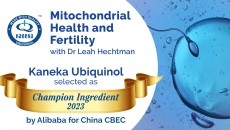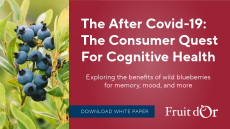ARS launches antioxidant value database
database giving antioxidant values for 277 fruits, nuts, vegetables
and spices, which could help inform industry and scientists about
healthy potential of certain ingredients.
Antioxidants are understood to prevent cellular damage by preventing the formation of free radicals, atoms that are formed when oxygen interacts with certain molecules. These free radicals can, in turn, damage DNA and pave the way towards serious illness like cancer, other diseases, and outward signs of aging. Antioxidants - an umbrella term including vitamins like vitamins, C, E and beta carotene - have a great deal of recognition amongst consumers as healthy food components. As such, food ingredient companies and manufacturers often flag up antioxidant content in their marketing efforts. A database that comprehensively lists antioxidant value of foods could therefore prove helpful to companies designing products on a healthy platform, as well as scientists looking to delve deeper into antioxidants' health benefits. Although there are several categories of antioxidant, (flavonoids, anthocyanins, polyphenols…), scientists often measure their activity according to their Oxygen Radical Absorbance Capacity, or ORAC value. In fact, this measure was originally devised by an ARS chemist called Ronald Prior and colleagues. Fitting, then, that this is the measure used by the researchers from the ARS' Nutrient Data Laboratory in Beltsville, MD, and the Arkansas Children's Nutrition Center in Little Rock in compiling their database. The researchers conducted ORAC tests on a number of the 277 food products at the Arkansas center. The subjects included various forms of cocoa and chocolate, which performed particularly well. The total ORAC value of ground cloves was given to be 314446 umol TE/100g; and for high-tannin sorghum wheat 240000. They also searched peer-reviewed scientific literature on the subject, and screened studies using a data quality evaluation system developed by the ARS. Both screened and analysed data are listed, along with data quality indicators. However the data do come with a caveat: "Antioxidant capacity measures may vary due to factors such as the type of cultivar studied and its growing and harvesting conditions, as well as the methods for a food sample's preparation, processing and/or analysis," said the ARS. The ARS has previously made public a database made public in 2004, which estimated antioxidant capacity of 171 foods.












